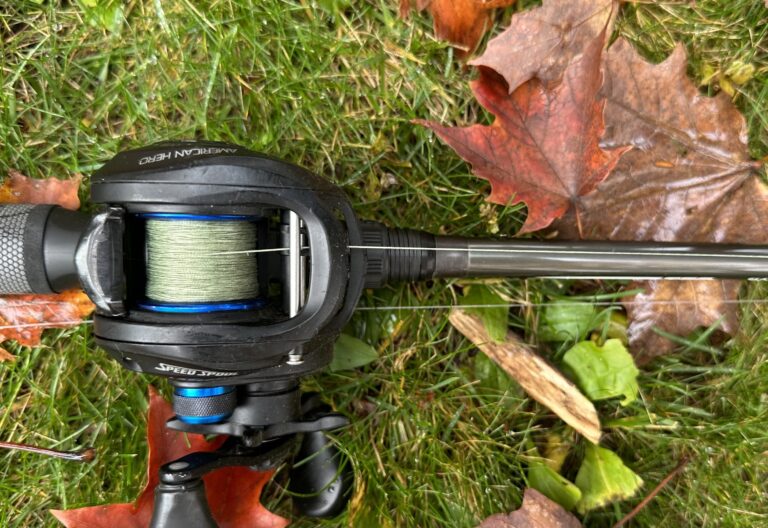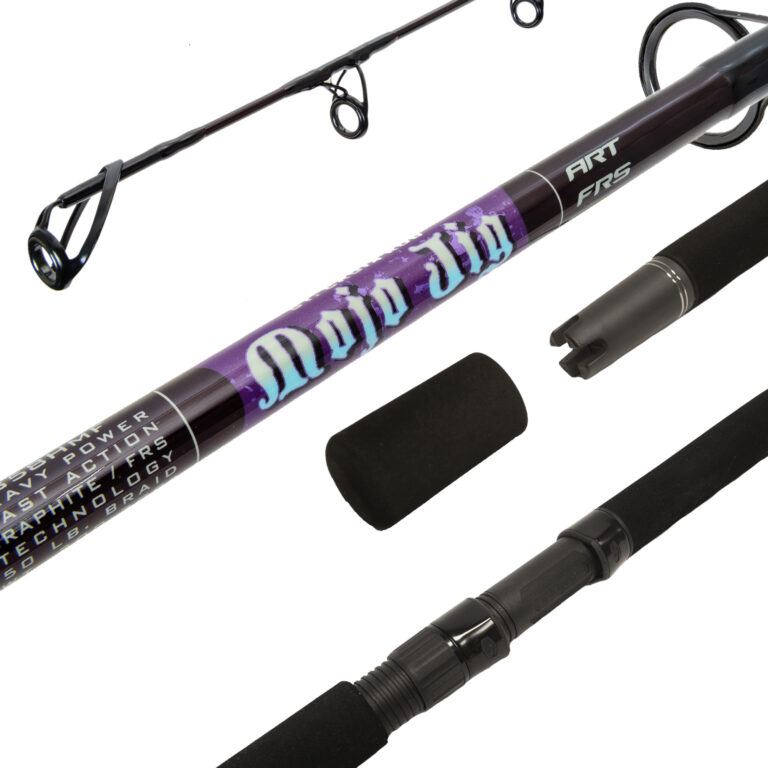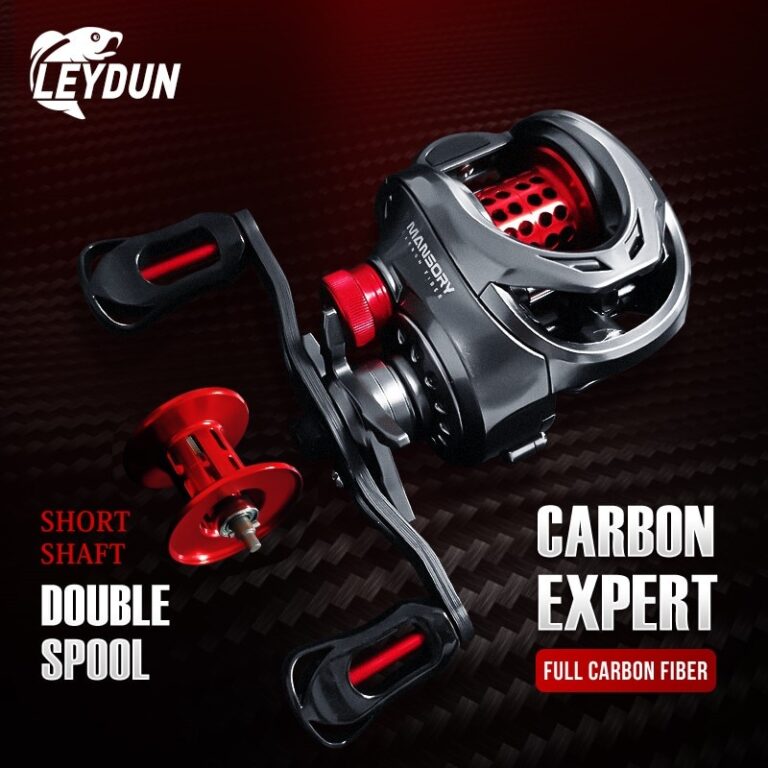A baitcasting reel is best used in situations where you need precise control and accuracy when casting heavy lures or fishing in heavy cover. It is ideal for experienced anglers looking for better control, distance, and accuracy in their casts.
Baitcasting reels allow for easy adjustment of drag and line tension, making them perfect for targeting larger fish species and fishing in specific techniques like flipping or pitching. Their design also makes them suitable for casting heavier lines and lures, providing better leverage and power.
Whether you are fishing in freshwater or saltwater, a baitcasting reel is a valuable tool when you require precise control and power in your fishing endeavors.

Credit: www.gameandfishmag.com
Understanding The Basics Of Baitcasting Reels
Are you planning to level up your fishing game? One essential tool you should consider adding to your gear collection is a baitcasting reel. While baitcasting reels may seem intimidating at first, understanding their basics will make you realize the significant advantages they offer.
In this section, we’ll delve into how baitcasting reels work, explore their key components and features, and discuss their advantages and disadvantages.
How Do Baitcasting Reels Work?
Baitcasting reels operate based on a simple principle: casting a fishing line in a controlled manner. Here’s how they work:
- The spool on a baitcasting reel is attached to the handle, allowing for direct rotation as you reel in the line.
- When casting, the spool releases the line, allowing it to unwind smoothly.
- The speed and distance of the cast are determined by the angler’s skill and the amount of thumb pressure applied to the spool during the release.
- The magnetic braking system or centrifugal brake inside the reel helps control the spool’s speed, preventing backlashes or tangles.
Key Components And Features Of A Baitcasting Reel
To better understand baitcasting reels, let’s take a closer look at their key components and features:
- Spool: The spool holds the fishing line and rotates during casting and retrieval.
- Handle: Connected to the spool, the handle allows for smooth reeling and effortless line retrieval.
- Brake system: Baitcasting reels come equipped with a braking system, such as magnetic or centrifugal, that helps control the spool’s speed during casting.
- Drag system: The drag system is responsible for controlling the resistance applied to the line when a fish pulls it.
- Gear ratio: Each baitcasting reel has a gear ratio, which indicates the number of times the spool rotates with each handle turn. For example, a gear ratio of 7.1:1 means the spool rotates 7.1 times with one complete handle turn.
- Line capacity: Baitcasting reels have specific line capacity, indicating the amount of fishing line they can hold.
- Ball bearings: Reels with more ball bearings typically offer smoother operation and reduce friction.
Advantages And Disadvantages Of Baitcasting Reels
Like any fishing gear, baitcasting reels come with their own set of pros and cons. Let’s explore them:
Advantages:
- Greater casting distance: Baitcasting reels excel in casting accuracy and offer greater distance compared to spinning reels.
- Precision and control: With practice, baitcasting reels provide anglers with better control over lure placement and accuracy.
- Power and strength: Baitcasting reels are built to handle heavier lines and target larger fish species.
- Versatility: Baitcasting reels can be used in various fishing techniques, including flipping, pitching, and heavy cover fishing.
Disadvantages:
- Steep learning curve: Baitcasting reels require some practice to master the technique and avoid backlash.
- Backlash potential: Improper thumb control or incorrect settings can lead to backlash, resulting in tangled lines.
- Heavier design: Baitcasting reels are typically heavier than spinning reels, which might cause fatigue during prolonged use.
Now that you have a better grasp of the basics of baitcasting reels, you can make an informed decision on when to use one. While they may not be suitable for every fishing scenario, baitcasting reels offer unique advantages that can enhance your fishing experience when used correctly.
So, why not give them a try and take your fishing skills to the next level?
Assessing Fishing Conditions For Baitcasting Reels
Whether you’re an experienced angler or a beginner, choosing the right fishing gear is essential to improve your chances of success. When it comes to baitcasting reels, it’s important to assess the fishing conditions to determine if they are the right choice for your fishing expedition.
In this section, we will explore the key factors to consider when deciding to use a baitcasting reel.
Identifying The Target Species And Fishing Techniques
Identifying the target species and understanding the fishing techniques you will be using is crucial in determining if a baitcasting reel is suitable for your needs. Here are some key points to consider:
- Different fishing techniques require different reel types. Baitcasting reels are better suited for techniques such as flipping, pitching, and casting heavier lures.
- If you are targeting larger species, such as bass or pike, a baitcasting reel provides the power and control needed to handle their size and strength.
- Baitcasting reels allow for more precise lure placement, making them ideal for techniques that require accurate casting and presentation.
Evaluating The Fishing Environment And Potential Obstacles
The fishing environment plays a significant role in determining the type of reel you should use. Here’s what you need to consider:
- Baitcasting reels excel in open water environments, such as lakes and reservoirs, where long casts are often required.
- If you’re fishing in areas with heavy cover, such as dense vegetation or structure-filled areas, a baitcasting reel’s ability to handle heavier lines and lures can help you navigate through obstacles with ease.
- It’s important to evaluate the presence of wind or current in your fishing location. Baitcasting reels offer better control and can handle challenging conditions, ensuring your casts are accurate and effective.
Determining The Desired Casting Distance And Accuracy
Casting distance and accuracy are crucial factors in successful fishing. When deciding if a baitcasting reel is the right choice, consider the following points:
- Baitcasting reels are capable of longer casts than spinning reels, making them suitable for situations where you need to cover a large area.
- If you require pinpoint accuracy, such as targeting specific spots near structure or in tight areas, a baitcasting reel’s precise control can help you hit your mark consistently.
- It’s important to note that baitcasting reels require some practice to master their casting technique. If you are willing to invest time and effort into learning the proper technique, the rewards in terms of distance and accuracy can be significant.
Assessing the fishing conditions is key when deciding to use a baitcasting reel. By considering the target species and fishing techniques, evaluating the fishing environment and potential obstacles, and determining the desired casting distance and accuracy, you can make an informed decision that will enhance your fishing experience.
Remember, practice makes perfect when it comes to baitcasting reels, so don’t be discouraged if it takes time to get the hang of it. Happy fishing!
Factors To Consider When Deciding To Use A Baitcasting Reel
Are you considering using a baitcasting reel for your next fishing expedition? Baitcasting reels are popular among experienced anglers, but they may not be suitable for everyone. Before you make your decision, take into account the following factors:
Skill Level And Experience With Baitcasting Reels
Using a baitcasting reel requires a certain level of skill and experience. It may not be the best choice for beginners or those who haven’t used this type of reel before. Consider the following points:
- Mastery of casting techniques: Baitcasters require proper thumb control and careful adjustment of the spool tension. If you’re confident in your casting skills, a baitcasting reel might be right for you.
- Familiarity with backlash prevention: Baitcasting reels are notorious for backlash, also known as the dreaded “bird’s nest.” A good understanding of spool tension and brake settings is crucial to prevent this from happening.
Target Species And Preferred Fishing Techniques
The choice of reel depends on the species you intend to catch and your preferred fishing techniques. Different reel types excel in specific situations. Keep these points in mind:
- Heavyweight species: Baitcasting reels offer greater line capacity and robust drag systems, making them well-suited for targeting larger fish.
- Precision casting: If you desire accurate and precise casts, especially in tight spots or around structure, baitcasting reels provide better control and accuracy than spinning reels.
Fishing Conditions And Specific Challenges
Consider the fishing conditions and specific challenges you might face during your outing. These factors can help determine whether a baitcasting reel is the right choice for you:
- Windy conditions: Baitcasters have more weight and provide better control, allowing you to manage windy conditions more effectively than with spinning reels.
- Heavy cover and structure: When fishing in heavy cover or around structures such as rocks or docks, baitcasting reels offer enough power to tackle these challenges.
Remember, choosing the right reel is crucial for an enjoyable and successful fishing experience. Take into account your skill level, target species, fishing techniques, and the conditions you anticipate encountering. By considering these factors, you’ll be able to decide whether a baitcasting reel is the right tool for your next fishing adventure.
So, gear up and get ready for an exciting day on the water!
Conclusion
Overall, using a baitcasting reel can be advantageous for various fishing situations. Its ability to handle heavy lines and lures, as well as provide more control and accuracy in casting, makes it a valuable tool for experienced anglers. However, it is important to consider certain factors before deciding to use a baitcasting reel.
Firstly, the type of fishing technique and target species should be taken into account. Baitcasting reels are generally preferred for techniques such as flipping, pitching, or targeting larger game fish. Secondly, your level of experience should be considered, as baitcasting reels require more skill and practice to master.
Finally, the budget and personal preferences should also play a role in your decision-making process. By carefully evaluating these factors, you can determine when it is appropriate to use a baitcasting reel and enhance your fishing experience. Happy fishing!






